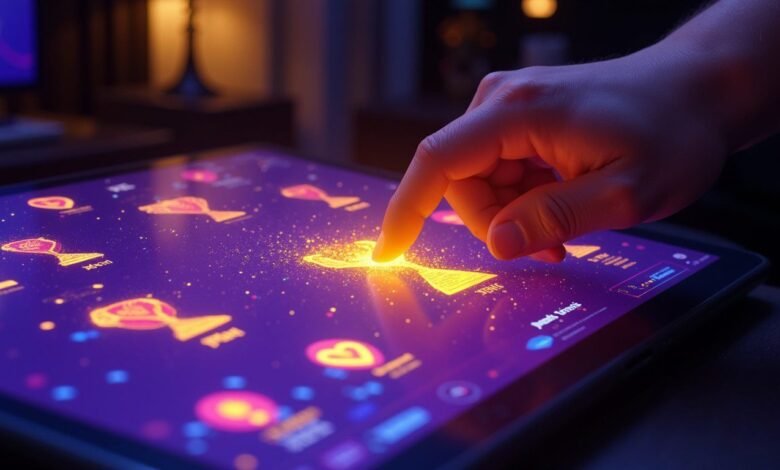
According to a recently published study, it is expected that the Gamification market will reach $ 74 billion by 2029, as the average growth rate of the concentrated annual growth is approaching by 29 %. These are very great numbers, and when you think that Gamification techniques are used to influence consumer behavior, they affect all of us. In other words, this is not just a strategy that Igaming brands use IcecasinoAs some may assume: as consumers, we face its applications in almost every aspect of our daily life. Let’s take a closer look at this strategy, which is based on simple but effective psychological principles.
What is Gamification?
In its simplest forms, Gamification includes the integration of elements and mechanics seen in games in marketing techniques for other industries. The goal is to increase the popularity of a specific product or service. Consumer is motivated by certain methods, which are based on the principles of goals, rewards and competition. Simply put it:
- goalThe consumer clearly shows what they need to do to achieve a specific reward. For example, it is said that if they bought another product with their products, they will earn the “ideal shopping” achievement.
- prizeThis can be anything, but it is important for the consumer clearly to understand what it is and how he can earn it. These are often a badger, achievements or cosmetic elements.
- a raceThe consumer shows the achievements and rewards of other consumers. This is usually presented in the format of the results panel. The consumer is encouraged to “challenge their competitors” and is motivated to do so.
Although these are simple principles, they can be incredibly effective when applying them properly. Gamification is not a consumer equivalent strategy for every simple action they take. For example, getting points for each product you buy is a simple and ineffective application for this strategy. However, for example, donating part of the amount you pay for every ten purchases of the Social Welfare Organization and earn a badge in return will be a more effective and efficient strategy.
Why does Gamification work?
The reason is that this strategy relates to the gem of our brains. When you get a bonus – without a passion for its kind – your brain is released. This is a hormone associated with happiness. Even if you are not aware of this, your mind ultimately creates a relationship between the reward and dopamine and begins to encourage you to continue to search for rewards in order to maintain the flow of the hormone. This technically is called the “Dopamine Bonus” – a happy course that relies on repetition. The simplicity of Gamification becomes an advantage here, as your mind can easily understand what to do to receive the reward.
How does Gamification affect games and players?
Gamification is a strategy rooted in games, but after improving it in other industries, it returned to games in a more advanced form. Regardless of the type and platform, you can see these strategies used in almost every game that have been developed in the past ten years. Casino games are at the forefront of this trend, as they were already designed to encourage players to achieve a goal and competition. In other words, it is well suitable for its formation. Here are some examples:
- Pragmatic Play games feature a monthly event called Drops & Wins, which is reseting every month. This event includes an actual updated results panel, and this results board can be accessed in each game developed by this studio. Players can follow the extent of other players winning regularly.
- Achievements have become a common feature added to most of the gambling machines recently. These achievements, which are based on the amount of victory, the frequency of the victory, and the amount of betting, also come with some special rewards. For example, after finishing 1000 rotating in the game, you can earn a virtual emblem and 5 spin free.
However, casino games are not the only category in which Gamification techniques are applied. The same technologies can also be seen in computer games, control unit and mobile phones. Here are some examples:
- Dying Light 2, which has been developed for a personal computer and the control unit, provides challenges for players who explore the open world at regular intervals. These challenges are often related to reaching a point from another point in the shortest possible time, and it has a global results board.
- In almost all mobile games, purchase in the game is given exclusive rewards, special cosmetics and badges. With every purchase, you can get something that distinguishes you from other players.
- Almost all MMORPG games feature global achievements. These achievements that can be easily distinguished such as “World First”, “Server First” and “Most Kills”, which can be used as a source of pride. We can see players who play the same game for only several months to achieve one achievement.
Given the success of these results, it is safe to say that Gamification techniques will not disappear, but they will instead develop into more effective and personal forms.
The future of Gamification
With artificial intelligence, we can safely say that Gamification techniques will become more customized in the near future. Currently, these strategies aim to the common people, but they will be close to all, as each player/consumer and rewards are specially designed for their play/consumption style. This will make it more effective and productive. The way we play games and our habits as consumers change, and the discrimination strategies are at the forefront of this shift.





